Share

Solarpunk Presents
50 Million Years of Climate Change with Dr Christina De La Rocha
Have you ever thought about how dinosaurs lived on a warm, swampy Earth and how we live on one that’s cold enough to keep pretty much the entirety of Greenland and Antarctica buried under kilometers-thick sheets of solid ice and wondered, hmm, how did we get from there to here? The short answer is that it took 50 million years of declining atmospheric carbon dioxide concentrations and dropping temperatures, not to mention building an ice sheet or two. For the longer story of the last 50 million years of climate change, including some of the reasons why, catch this episode of our podcast with Dr De La Rocha! You’ll hear about plate tectonics and continental drift, silicate weathering, carbonate sedimentation, and the spectacular effects the growth of Earth’s ice sheets have had on Earth’s climate. There are also lessons here for where anthropogenic global warming is going and whether or not its effects have permanently disrupted the climate system. Fun fact: the total amount of climate change between 50 million years ago and now dwarfs what we’re driving by burning fossil fuels, and yet, what we’re doing is more terrifying, in that it’s unfolding millions of times faster.
Bonus content: If you want to see sketches and plots of the data discussed in this episode, you can do so here!
!!Nerd alert!!
If you're interested in the primary scientific literature on the subject, these four papers are a great place to start.
- Dutkiewicz et al (2019) Sequestration and subduction of deep-sea carbonate in the global ocean since the Early Cretaceous. Geology 47:91-94.
- Müller et al (2022) Evolution of Earth’s plate tectonic conveyor belt. Nature 605:629–639.
- Rae et al (2021) Atmospheric CO2 over the last 66 million years from marine archives. Annual Review of Earth and Planetary Sciences 49:609-641.
- Westerfeld et al (2020) An astronomically dated record of Earth’s climate and its predictability over the last 66 million years. Science 369: 1383–1387.
Connect with Christina at her blog and on Mastodon
Support the show on Patreon or make a one-time donation via PayPal.
More episodes
View all episodes
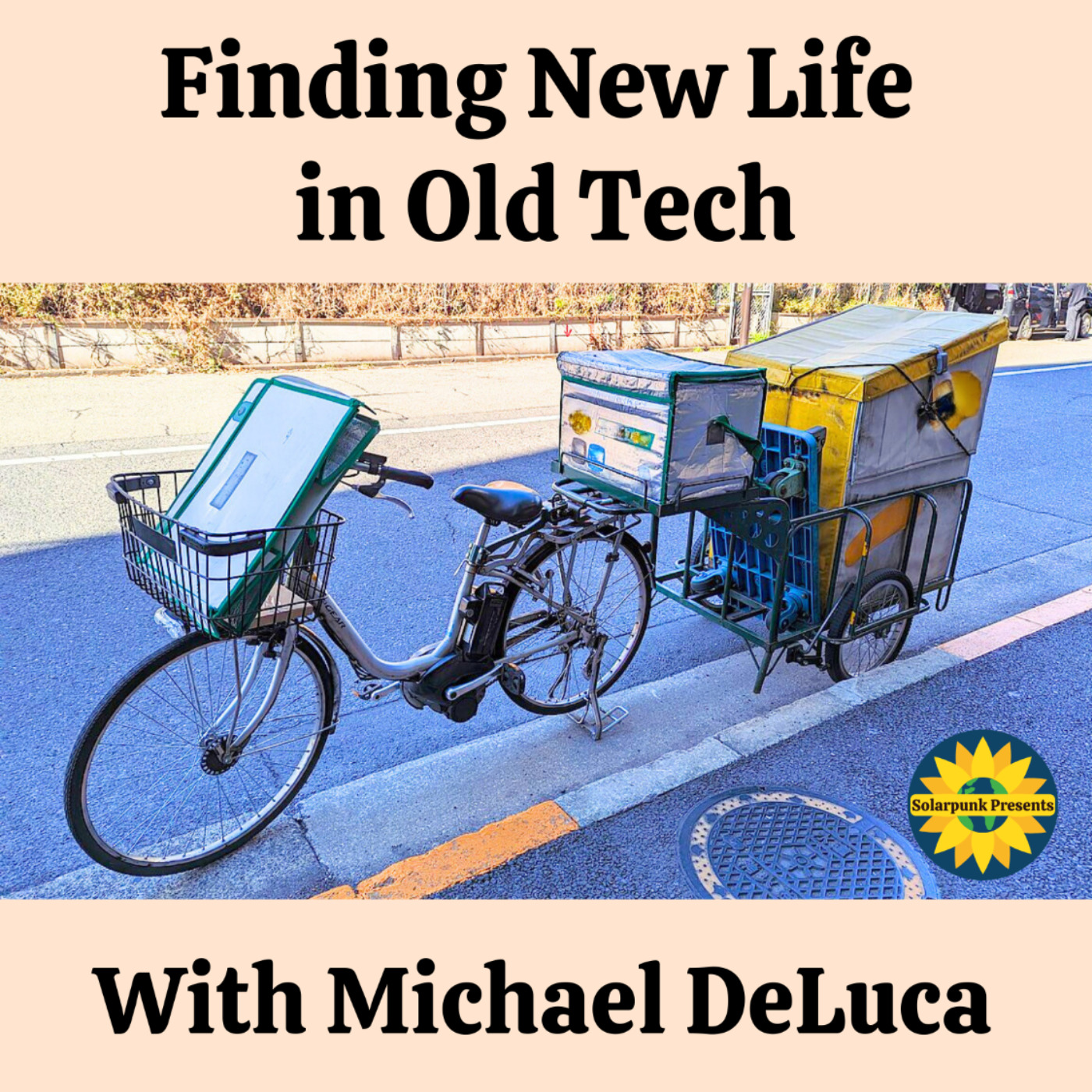
9. S5E9: Finding New Life in Old Tech, With Michael DeLuca
56:40Join us for the final interview of this season, as we talk with Michael DeLuca, publisher of Reckoning, a yearly journal of creative writing on environmental justice, and author of The Jaguar Mask. Michael, impressed by the creative uses of cast off technology in the Global South, would like us to also adopt old tech. He recommends that we follow their lead and adapt old tech to suit our needs, as well as find creative new uses for old tech. We should do better than just be passive consumers of the tech that is sold to us more to the needs and convenience of the companies that produce it than to ours. You can follow Michael via his website (mossyskull.com), Mastodon (@MichaelJDeLuca@climatejustice.social), and Bluesky and X (@michaeljdeluca). Here are some links relevant to our discussion......about the hand-cranked laptop...concerning the (reindeer) who ate all the food on the island...regarding a degrowth strategy to reach net zero carbon dioxide emissions to the atmosphere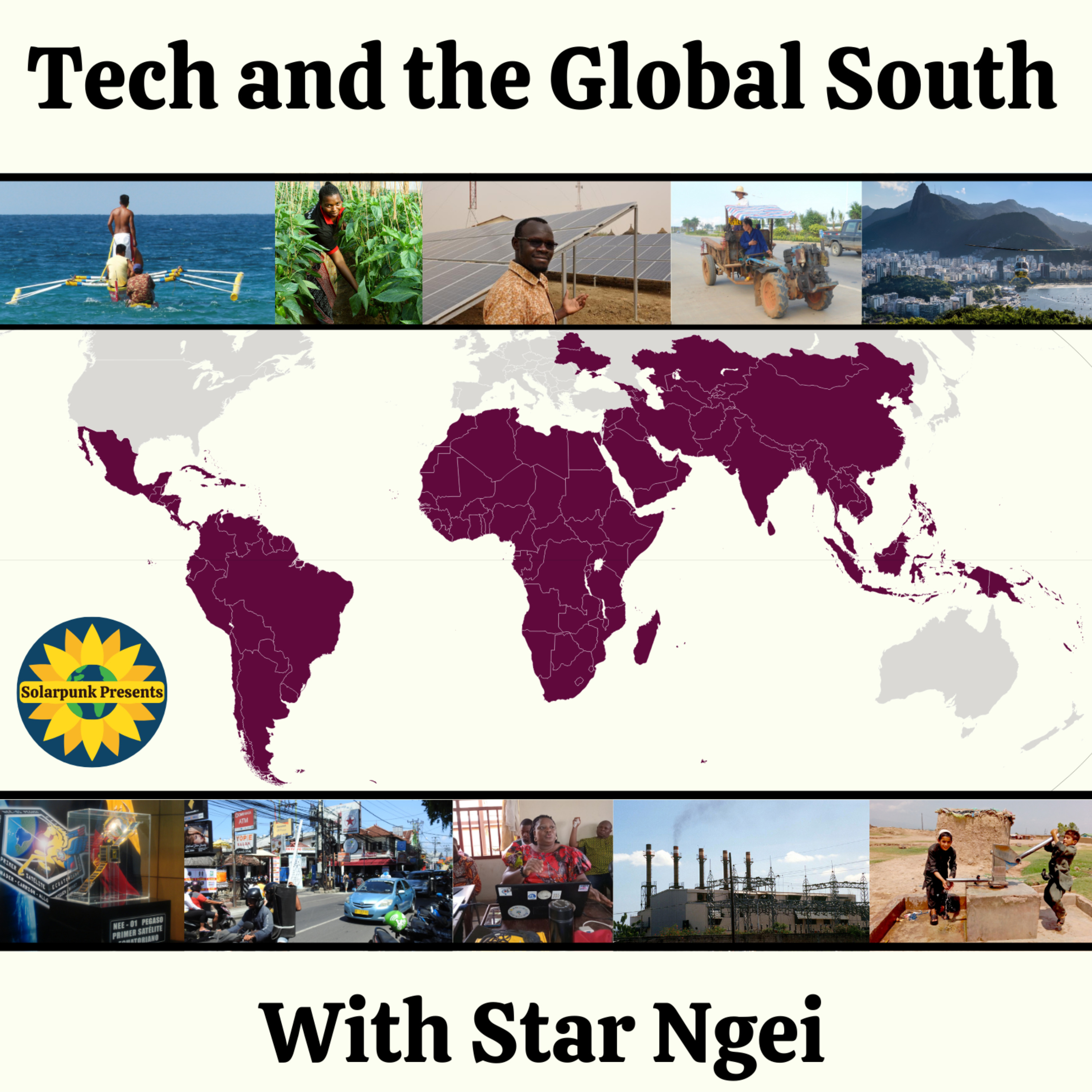
8. Tech and the Global South with Star Ngei
51:27In this episode, Christina talks with Star Ngei, a maker/hacker who helps raise awareness of Global South technology and innovation through the NGO Global Innovation Gathering (GIG), which hosts a network of makers and makerspaces throughout the Global South. Although it’s hard to generalize across a space as culturally, politically, economically, and geographically diverse as the Global South, Christina and Star discuss how the access of people in the Global South to tech is limited compared to that of people in the Global North and so they have a more creative, non-linear approach to technology. They’re far more open to modifying a piece (or pieces) of technology to fit their specific needs, rather than just using it as it comes out of the box and merely specifically for its intended use. Christina and Star also talk about climate change and what the Global North can learn from the Global South in terms of dealing with it. Lastly, they talk about building community and how, if you’re interested in working to decrease global inequality by helping people in the Global South, the best place to start is by striking up a relationship with a community there first. Unless you want your efforts to be a waste of your time, their time, and resources, don’t just give a group of people in the Global South what you think they need, find out what they think they would find useful.To join, support, or learn more about Global Innovation Gathering, check out https://globalinnovationgathering.org/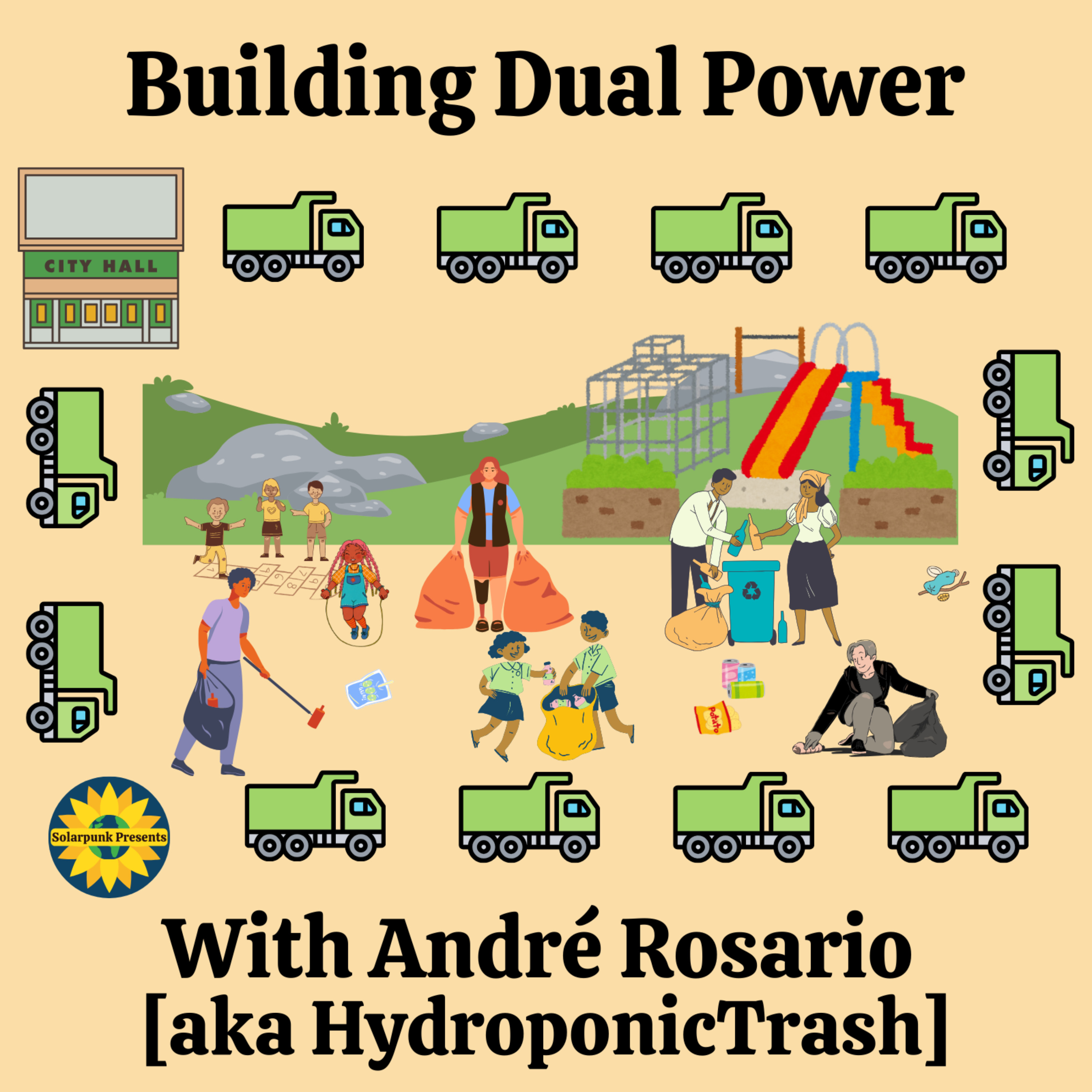
7. Building Dual Power, with Andre Rosario [aka HydroponicTrash]
49:50André Rosario (aka HydroponicTrash) joins us this week on the podcast to tell Ariel all about dual power - what it is, how it fits in with solarpunk, and how people can mobilize it in their daily lives. Their conversation ranges from the history of the term dual power, to examples from André’s own life, to the concept of mutual aid, the importance of imagining a better world, how to build relationships as an introvert, and even includes a discussion of human nature.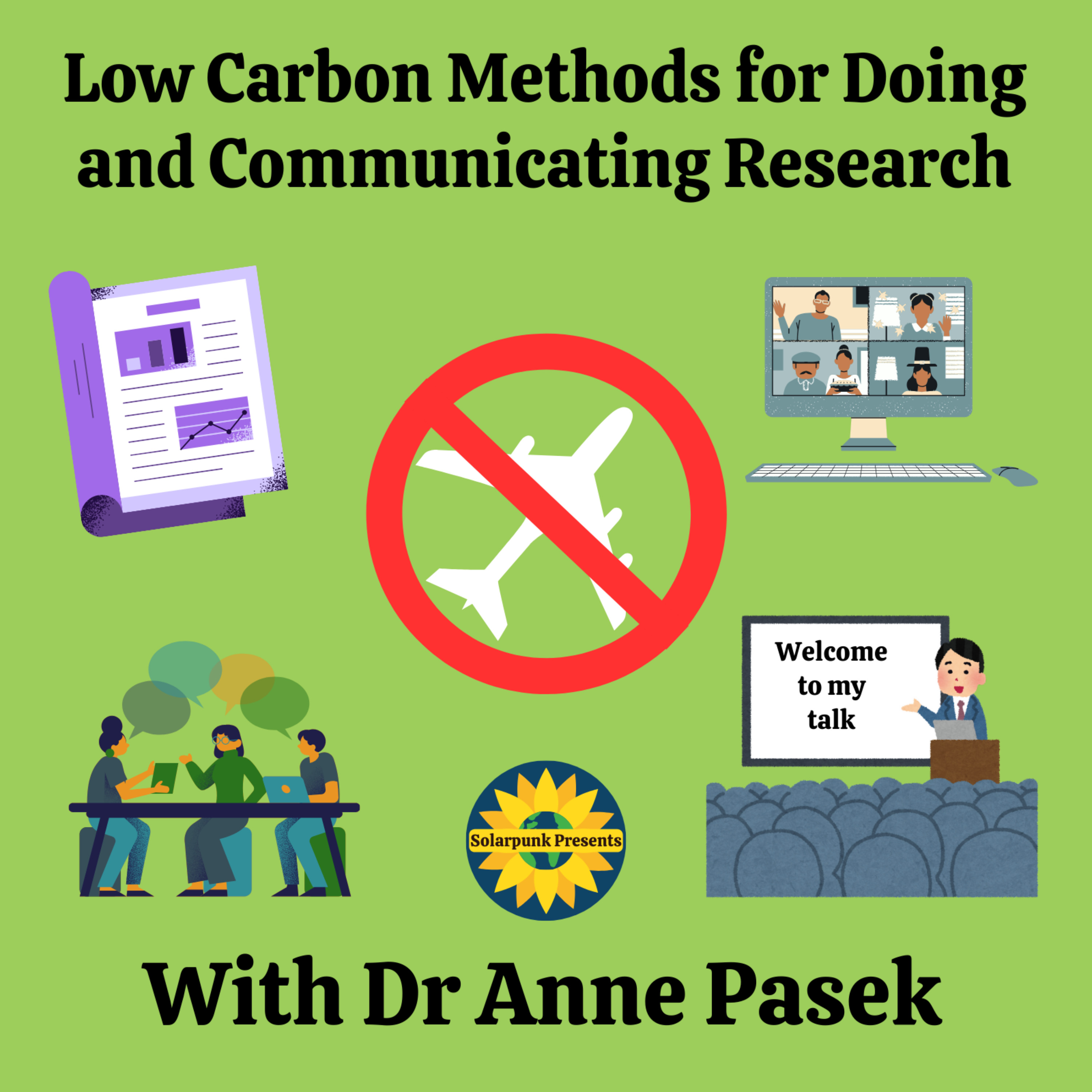
6. Low Carbon Methods for Doing and Communicating Research With Dr Anne Pasek
44:47This episode’s guest is Dr Anne Pasek, Canada Research Chair in Media, Culture, and Environment, and an Assistant Professor in the Department of Cultural Studies and the School of the Environment at Trent University. Dr Pasek is co-founder of the Low Carbon Research Methods Group, and she talks to Ariel all about what Low Carbon Research is (and can look like!), the “carbon footprint” of academic research, new innovative ways for research to respond to the climate crisis, the importance of zines, and even hosting her own solar server in her backyard! Links:Dr Pasek’s personal websiteLow Carbon Research MethodsEMM LABSolar Protocol
5. Tech and the Power of Solarpunk Narratives, with Paweł Ngei
59:05In this episode, Christina talks with hacker and enthusiastic solarpunk Paweł Ngei about the power of solarpunk narratives to open our eyes to the ways in which we do things and invite us to critically examine them. Why is tech built this way? Who are we disenfranchising by not having more or different designs for things? Who are we handing over too much power over our lives to mindlessly letting them thrust their tech into our lives without us knowing how it works? For more info about and thoughts from Paweł, can check out his blog (https://alxd.org/), be inspired by his podcast (https://podcast.tomasino.org/@SolarpunkPrompts), read his short story about a disabled inventor at https://glider.ink/, or read his review of Kim Stanley Robinson’s The Ministry for the Future (https://alxd.org/ministry-for-the-future-review.html#ministry-for-the-future-review). Other links Paweł recommends are about the book A Half Built Garden by Ruthanna Emrys and to a great solarpunk engineering wiki.Support Solarpunk Presents on Patreon or make a one-time donation via PayPal.
4. Behind the Scenes with the Solarpunk Conference Organizers
41:17In 2023, the inaugural Solarpunk Conference was held in virtual space, bringing together over 150 attendees, 18 presenters, and creating a palpable sense of the solarpunk community. This episode, Ariel chats with conference organizers Charles Valsechi, Lindsay Jane, and Kees Schuller about the genesis of the conference, the inspiration for its theme, as well as a little preview of what they are hoping to see at the 2024 Solarpunk Conference: Rays of Resilience.You can go to https://www.solarpunkconference.com/ to check out The Solarpunk Conference, access The Solarpunk Conference Journal, and buy tickets. You can also check out the channel on YouTube for recordings of last year’s presentations, and stop by Lindsay Jane's channel @TheSolarpunkScene for more solarpunky content!Support Solarpunk Presents on Patreon or make a one-time donation via PayPal.
3. Solarpunk, Lunarpunk, Crypto, & Web3
49:52In Season 5 Episode 3 of Solarpunk Presents, Christina chats with transdisciplinary technologist Stephen Reid about relationship solarpunk and lunarpunk have to crypto and web3. If lunarpunk is what solarpunk gets up to in the shadows of a moonlit night, that suggests that lunarpunk is inherently more interested in privacy, security, and anonymity, especially from the watchful eye of the state. That would further mean that where solarpunk is interested in renewable energy, sustainability, appropriate technology, and social justice, lunarpunk is interested in the tools, like cryptography, cryptocurrencies, and web3, that safeguard our privacy and anonymity and potentially protect us from tyranny. Do we need lunarpunk’s fixation with using tech to protect our privacy to counterbalance solarpunk’s sunny optimism that everything will all be fine to break through to a better world? To learn more about Stephen, his philosophies, and his work, check out https://stephenreid.net/Disclaimer: Neither Christina, Ariel, nor the Solarpunk Presents podcast agree with nor support the use of cryptocurrencies or web3. For sound critiques of these technologies, check out the videos The Line Goes Up - The Problem With NFTs and Web3.0: A Libertarian Dystopia and the website https://www.web3isgoinggreat.com/.
2. Podcasting Dreams of the Solacene
37:13In this podcast, host Ariel has a chat with Aaron and Alicia, the team behind Solacene podcast in Montreal, Canada. They talk about the meaning of “Solacene”, their goals, the semester-structure of their show, zines, community, upcycled clothing, embodied reality, environmental positivity, and a sneak peek at what is next for Solacene in the future… just to name a few topics. Tune in on your favourite podcatcher or streaming service today!Links:Solacene YouTube: https://youtube.com/@solacene?si=iyP9ae71VypNQ-SZWebsite: https://solacene.bigcartel.com/Support Solarpunk Presents on Patreon or make a one-time donation via PayPal.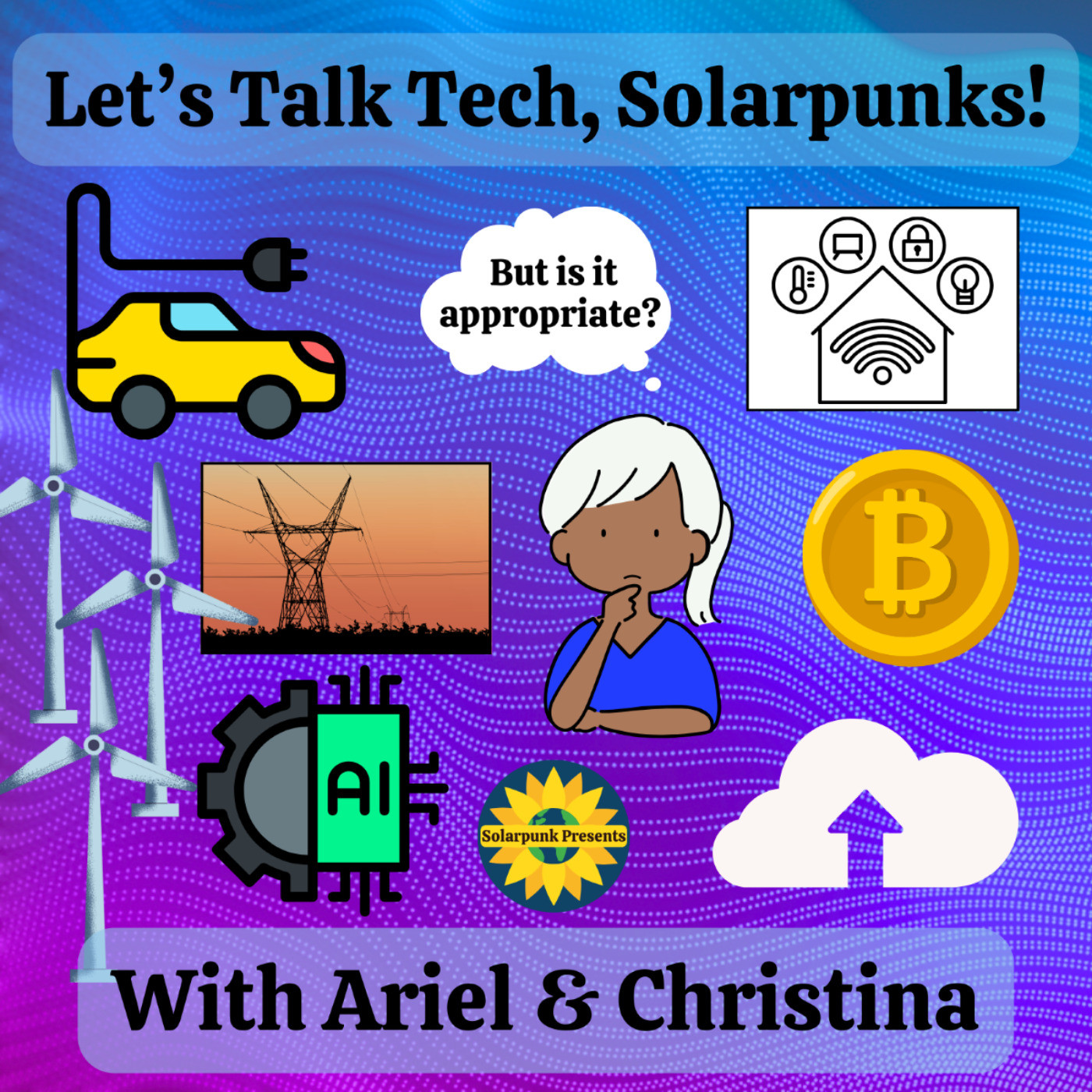
1. Let's Talk Tech, Solarpunks! With Ariel & Christina
54:11If tech wasn’t such a central aspect of solarpunk, we’d all just be hippies redux. Yet not all tech, right? Because solarpunk is also about living the good life while building a just, inclusive, and sustainable society. So, what is solarpunk’s attitude toward and relationship with tech? How do solarpunks decide what’s worth it and what’s beyond the pale? And what’s all this about appropriate technology?Support Solarpunk Presents on Patreon or make a one-time donation via PayPal.